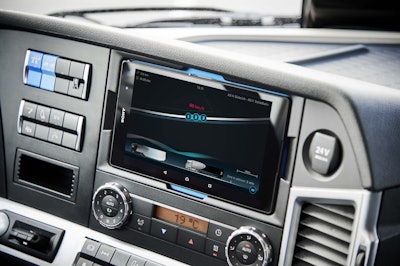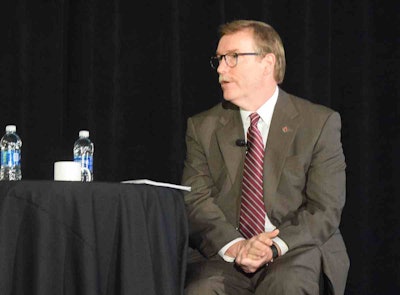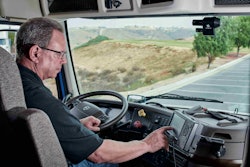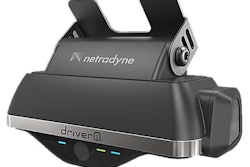 Telematics systems are one of the linchpins of trucking’s coming technology shift, Clarke says. “This industry is on the verge of a huge technological transformation,” he said. “Connected vehicles will be ubiquitous.”
Telematics systems are one of the linchpins of trucking’s coming technology shift, Clarke says. “This industry is on the verge of a huge technological transformation,” he said. “Connected vehicles will be ubiquitous.”By the year 2035, the U.S. will have 35 mega-cities connected by major freeways on which tractor-trailers operate in a self-driving autopilot mode, according to the vision offered by Navistar International President and CEO Troy Clarke at the 2016 FTR Conference on Sept. 15.
In such a scenario, truck drivers would manually drive their vehicles to the freeways, then engage an on-highway autonomous system that frees the driver from operating the vehicle on the highway, Clarke says. The truck driver would then reengage to operate the vehicle when the truck nears its destination. “We would have fewer, but well-trained drivers that are paid a lot more,” he said. “You’d have a system that’s very analogous to an airline pilot.”
Clarke spoke in a one-on-one with FTR CEO Eric Starks in a 30-minute talk held at the 2016 FTR Conference on Thursday. In addition to the long-term view of the industry, Clarke talked more near-term trucking technologies, Navistar’s new partnership with Volkswagen and truck maker’s roles in boosting the industry’s asset utilization.
 Clarke spoke in a 30-minute one-on-one talk with FTR CEO Eric Starks.
Clarke spoke in a 30-minute one-on-one talk with FTR CEO Eric Starks.“Trucks are used a little more than half of the available hours they can be used,” Clarke said of carriers’ asset utilization. If the industry could achieve 100 percent asset utilization, carriers would need half the number of trucks and half the number of drivers they do now. Highways would also need less maintenance, he said.
“If we can solve the technical puzzle and utilize [equipment] at a higher rate, it solves emissions, it solves the driver shortage,” Clarke said.
Trucking is on the precipice of a major technology revolution, Clarke said. “Telematics systems will allow carriers to know where their trucks are, what they’re doing and how they’re performing,” he said. “And software [can] turn trucks into transport systems that integrate with the highway system.”
Clarke said Navistar’s recently announced partnership with Volkswagen, in which VW purchased a nearly 20-percent stake in Navistar, gives the truck and engine maker access to emerging technology that it otherwise wouldn’t have had.
“We like access to technology and we like access to scale,” he said. “It may not solve every problem we have, but it creates opportunities that at this time last year didn’t exist. And we want to take advantage of those opportunities.”













